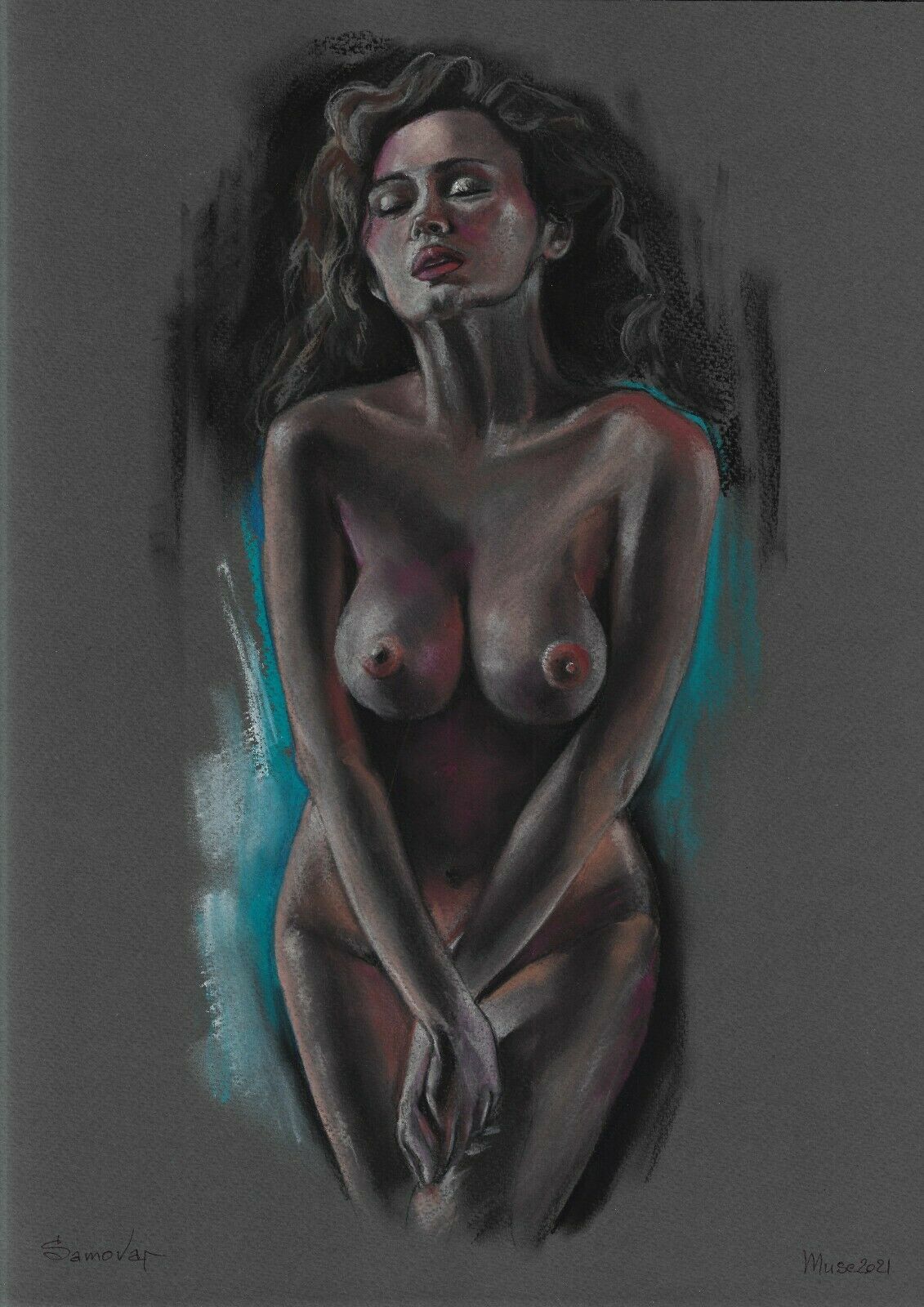-40%
Auguste Roubille - Drawing - Pencil - Katydid 3
$ 138.2
- Description
- Size Guide
Description
Artist:Auguste Roubille (1872-1955)
Title:
Grasshopper
Technical and support:
Ink
on paper mounted on color paper
Particularities of the work:
Original drawing signed lower middle
Dimensions:
6
cm x 12 cm
State:
Well
Origin :
Roubille Workshop
Why Bertrand loves the artist:
Auguste Roubille is a painter-illustrator with whom I like to explore the Belle Epoque (1890-1914) and the interwar period. I like this sweet melancholy in which the artist sometimes plunges us with his symbolist colors. I particularly appreciate its landscapes whose atmosphere reminds me of Edward Hooper.
Why Nathan loves the artist:
For me, Auguste Roubille is a perfect example of the mission of WD Art Gallery which is to share our passion for discovery. I had never heard of Roubille, but as we worked to uncover his brilliant career, I realized how important an artist he is: an avant-garde satirist, an Art Nouveau painter by excellence, a political supporter of the late 19th century anarchists, a futuristic illustrator for Werner motorcycle advertisements… And all with a keen eye and extraordinary design quality.
Expert commentary:
Like Alphonse MUCHA, Henri de TOULOUSE LAUTREC or Théophile STEILEN, Auguste Jean-Baptiste ROUBILLE is a gifted and versatile artist. An avant-garde artist, he was one of the pioneers of Art Nouveau who during the 1890s rebelled against the formalities and constraints of academic painting. Like many talented artists of the beautiful era, he contributed as an illustrator to major cultural upheavals. It is the illustrators-painters like Felix VALLOTON, Pierre BONNARD, Henri de TOULOUSE LAUTREC and of course Auguste ROUBILLE who are the first to use the symbol and the synthesis to show their anti-academism but, also, to flee the reality of an era where the technical progress celebrated during the universal exhibitions of 1889 and 1900 is dazzling. These artists will show real daring by simplifying the shapes and using flat areas of color with sometimes violent contrasts. They will also show in their works a true sensitivity thus magnifying what is hidden behind appearances. As a result, art historians see in these illustrators the precursors of symbolism, of the Nabis but also of Japonism. Despite the success of his watercolors and his gouaches at the Salon des Indépendants, Auguste Roubille will keep to himself the majority of his artistic production which is not linked to his work as an illustrator (mainly caricatures and satires). This allows us today to offer you a hundred works from his personal collection and which constitutes for us a real discovery that we are delighted to be able to share. His works are imbued with an incredible sensitivity (in particular his landscapes of city and countryside). His watercolors on flora and fauna are incredibly realistic and show the quality of the designer. As for caricature and satire, the artist excels in this area which will absorb all his energy and make him famous. Auguste Roubille is a witness to his time, he will draw life during the Belle Epoque and the interwar period with his elegant ladies, his lovers and his cars. Successively Influenced by the Art Nouveau and Art Deco movements, the artist will also design some decoration projects.
This commentary was prepared by our experts using the various reference books on the artist in our possession, any copying is therefore prohibited.
Biography :
Auguste Roubille is a painter, designer and poster artist. A talented illustrator, he particularly excelled in caricature and satire throughout his career.
He began as a press cartoonist at
French courier
and
at the New Times
in 1897. He signs A. Roubille or with a face-shaped monogram formed by the letters A and R or simply with the letters AR.
He contributes to most of the humorous newspapers (he will also be the poster for the comedians lounge):
Laughter, The smile, The cry of Paris, Cocorico, The bayonet The wild duck, The butter dish
. He will run all the covers of the satirical magazine
Fantasio
. As a decorator, he painted the frieze for the Maison du rire at the 1900 Universal Exhibition and a series of panels for the Harcourt café (rue Champollion), as well as furniture. Among his posters, there are Demaria Frères Photographic Cameras, La Motocyclette, Werner, Spratt's, Patent, High, Life, Tailor, Le Bourgeon, Scala en bombe !, Au Smart Carmen, La Maison du Rire`… Finally, he illustrates books such as:
Echo and Narcissus
by Paul Feuillâtre,
The French spirit
by Jules Renard with Ricardo Florès,
Grandgoujon
by René Benjamin,
The battle
by Claude Farrère (Fayard, The Book of Tomorrow, 1925),
Chastelaine
de Vergi (published by Léon Pichon in 1920.
Shipping and Packaging:
This work will be sent within 2 working days, packaged neatly in a solid package and secured at the ends with adhesive strips of guarantee. In case of return, it is the responsibility of the buyer under the same conditions of sending and packaging.
Payment :
Paypal, Check, Bank transfer.
Information:
For any questions, you can contact us at
06 20 26 92 55
Expert commentary: Like Alphonse MUCHA, Henri de TOULOUSE LAUTREC or Théophile STEILEN, Auguste Jean-Baptiste ROUBILLE is a gifted and versatile artist. An avant-garde artist, he was one of the pioneers of Art Nouveau who during the 1890s rebelled against the formalities and constraints of academic painting. Like many talented artists of the beautiful era, he contributed as an illustrator to major cultural upheavals. It is the illustrators-painters like Felix VALLOTON, Pierre BONNARD, Henri de TOULOUSE LAUTREC and of course Auguste ROUBILLE who are the first to use the symbol and the synthesis to show their anti-academism but, also, to flee the reality of an era where the technical progress celebrated during the universal exhibitions of 1889 and 1900 is dazzling. These artists will show re










